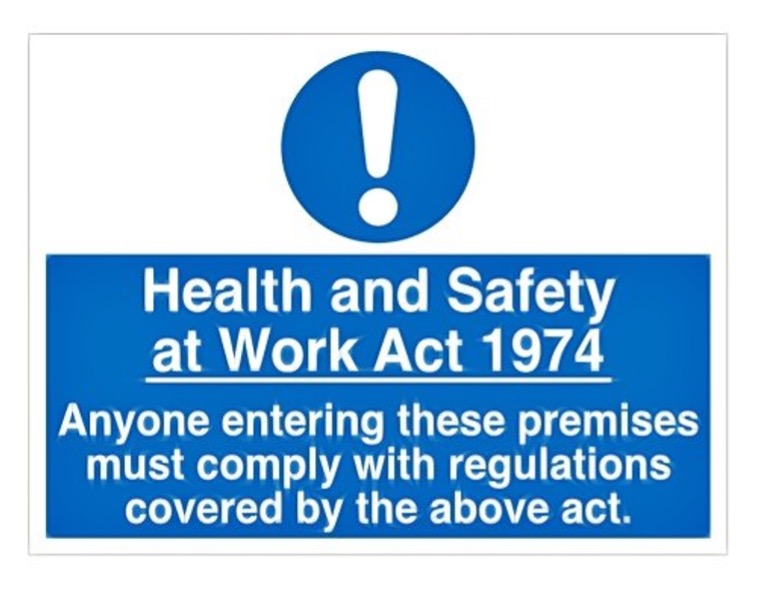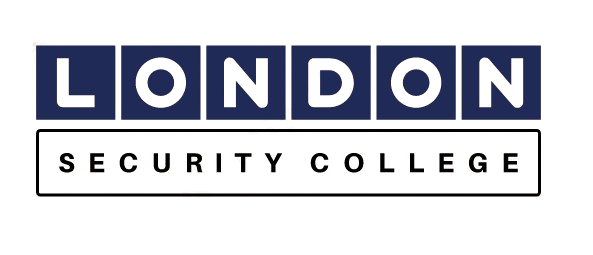9. Health and Safety at Work
By the end of this topic you will be able to:
- Define the main areas of Health and Safety legislation
- State the purpose of ‘duty of care’
- Explain the responsibilities of the employer, employee & self-employed
- Identify typical hazards, risks and spillages
- Describe safety signs and signals
- Explain the term ‘Manual Handling’
- State the precautions to be taken against HIV, Hepatitis and other infectious diseases

The Health and Safety at Work Act 1974 (HASAWA) lays down wide-ranging duties on employers. Employers must protect the ‘health, safety and welfare’ at work of all their employees, as well as others on their premises
Who is covered by the HASAWA 1971?
- Employers, self-employed and employees. Also, Casual employees (including part-time) and trainees
- Sub-contractors and Suppliers
- Anyone who uses the workplace (premises) or Visitors/customers (paying or otherwise) to the workplace (premises)
- Anyone using equipment
- Those who control premises
- Those affected by the work
- Users of the end product
- Anyone who uses the professional services of the company
- Anyone on the premises unlawfully
Responsibilities of Employers
Under the Act, Employers must provide:
- A safe workplace and safe systems of work
- Safe access and egress
- Training for employees
- A written safety policy
- Safe machinery, plant and equipment
Under the Act, Employees must:
- Look after the health, safety and welfare of themselves and others
- Co-operate with their employer, follow rules and procedures
All employees must follow the rules and procedures in place.
Responsibilities of Self-employed
- Under the Act, the Self-Employed are under the same obligations as the employed.
- They must al so follow the rules & procedures in place.
Summary of a door supervisor’s responsibilities in regard to Health and Safety
Door Supervisors are required, by law, to:
- Take reasonable care of their own Health & Safety
- Ensure that their acts or omissions do not adversely affect the Health and Safety of others
They specifically have to:
- Follow health & safety policies provided by the employer
- Practice safe working habits and obey all safety rules
- Be aware of emergency procedures and ensure they’re followed
- Use protective equipment and clothing properly, reporting any damage found
Hazard
Anything that has the potential to cause harm.
Risk Assessments
Risk Assessments involve:
- Identifying the hazards
- Quantifying the risks
- Evaluating the control required
- Recording and monitoring
- Informing and training
After a Risk Assessment, action must be taken to either.
- Eliminate the risk
- Adapt/accept/reduce the risk
- Provide protection from the risk
The Cost of Accidents
- Pain, suffering and distress to the victim and family
- Distress to colleagues
- Loss of output
- Damage to plant, materials etc
- Cleaning up after the accident
- Extra overtime
- Recruiting/hiring a replacement worker
- Investigating the cause and preventing repeats
- Changes in insurance premiums
- Legal costs/fines
- Loss of goodwill from work force and customers
Prohibition
The sign is used to indicate that you must not do something
Mandatory
The sign is used to indicate that you must do something.
Warning
The sign is used to indicate a warning of danger (Hazard)
Safe Condition
The sign generally indicates a condition associated with safety such as a fire exit, evacuation route or First Aid equipment
Fire Equipment
The sign gives information about fire equipment
Manual Handling Operations Regulations 1992
Manual handling is any transporting or supporting of a load, including lifting, putting down, pushing, pulling, carrying or moving of a load.
Before lifting an object, you have to consider:
- If there is a need for the object to be moved manually
- The weight of the object
- The stability of the object and centre of gravity
- Size of handholds and Ease of grip
- Surface texture
- Do I need PPE clothing?
- Could most people perform this task?
- Is the box secure?
The Noise at Work Regulations 2005
Common everyday sound levels dB(A)
- Loud radio: 70dB(A)
- Pig house at feeding time: 100dB(A)
- Jet aircraft on take-off: 120dB(A)
- The threshold of pain: 140dB(A)
- The average sound system: 120 to 130dB(A)
Violence towards Staff
From the Management’s point of view:
- Low morale
- A poor image for the venue
- Difficulties in recruiting new staff
- Absenteeism
- Increase in sick pay
- Possible compensation pays outs
- Problems with the police
- A reduction in customers coming to the venue
From the door supervisors’ point of view:
- Anxiety
- Stress
- Pain
- Suffering
- Disability
- Prosecution
- Death
RIDDOR
Reporting accidents and ill health at work is a legal requirement
R Reporting of
I Injuries
D Diseases &
D Dangerous
O Occurrences
R Regulations 1995
Smoke–Free Regulations – England/Northern Ireland/Wales
Premises must ensure that:
- Reasonable measures are taken to ensure that staff, visitors and customers are aware of the new law and that they do not smoke within enclosed spaces on the premises
- No smoking notices are displayed which are clearly visible to all who enter the premises
- Signs display the international “No Smoking” symbol
Penalties for Infringement:
- Individuals who smoke in no-smoking premises will be liable to a fixed penalty of £50 (£30 if paid within 15 days)
- Premises can be fined £200 if they do not take action to prevent smoking on or inside the premises, or if they do not provide sufficient no-smoking signs
- Refusal or failure to pay may result in prosecution and a fine of up to £2,500
Infectious Diseases
Infection may be transferred when:
- Searching an infected person (blood, urine, vomit)
- Coming into contact with dirty needles
- Coming into contact with blood or other body fluids during an arrest
- Administering first aid (bleeding injuries)
It is imperative that you take the appropriate precautions.

